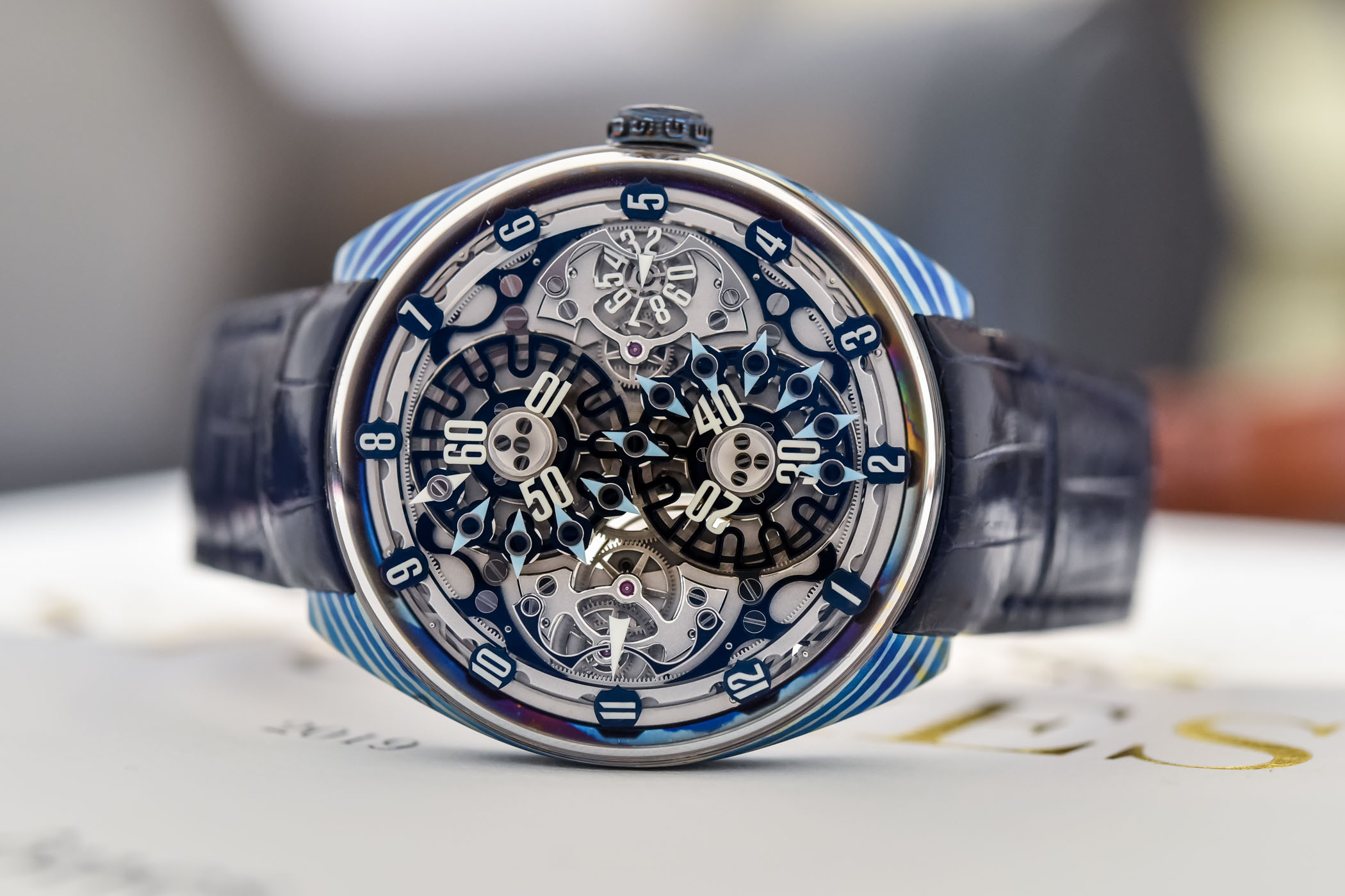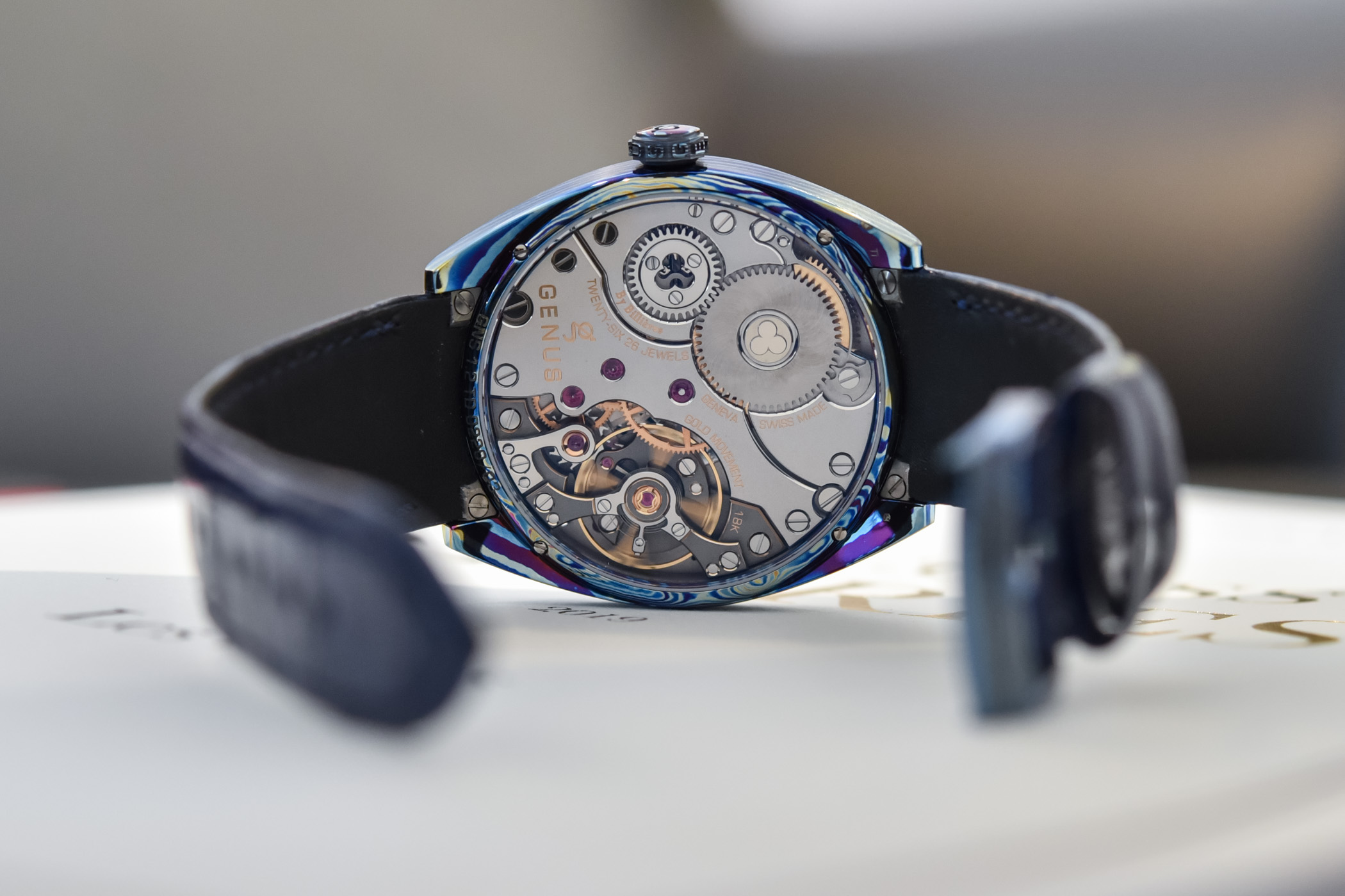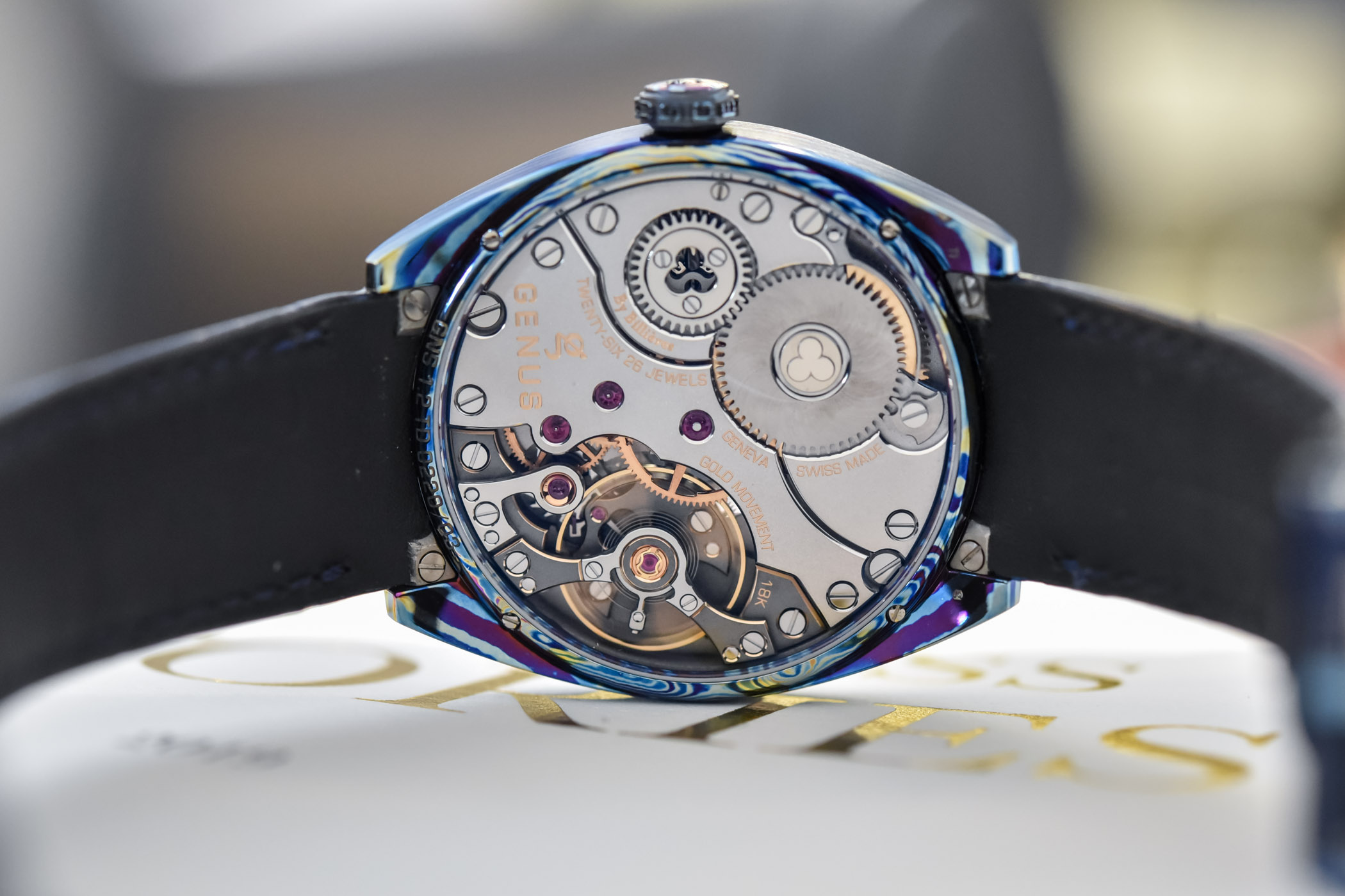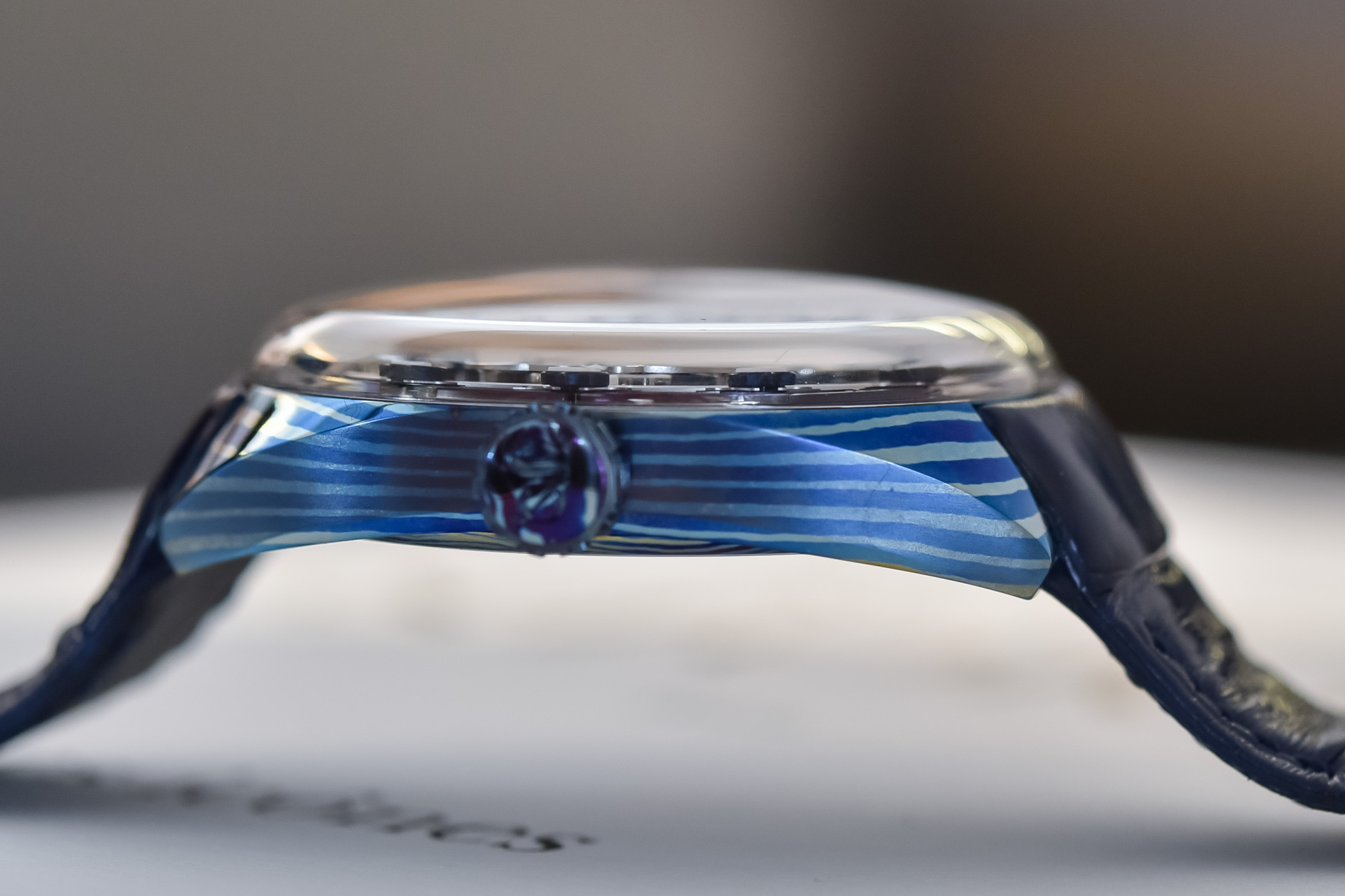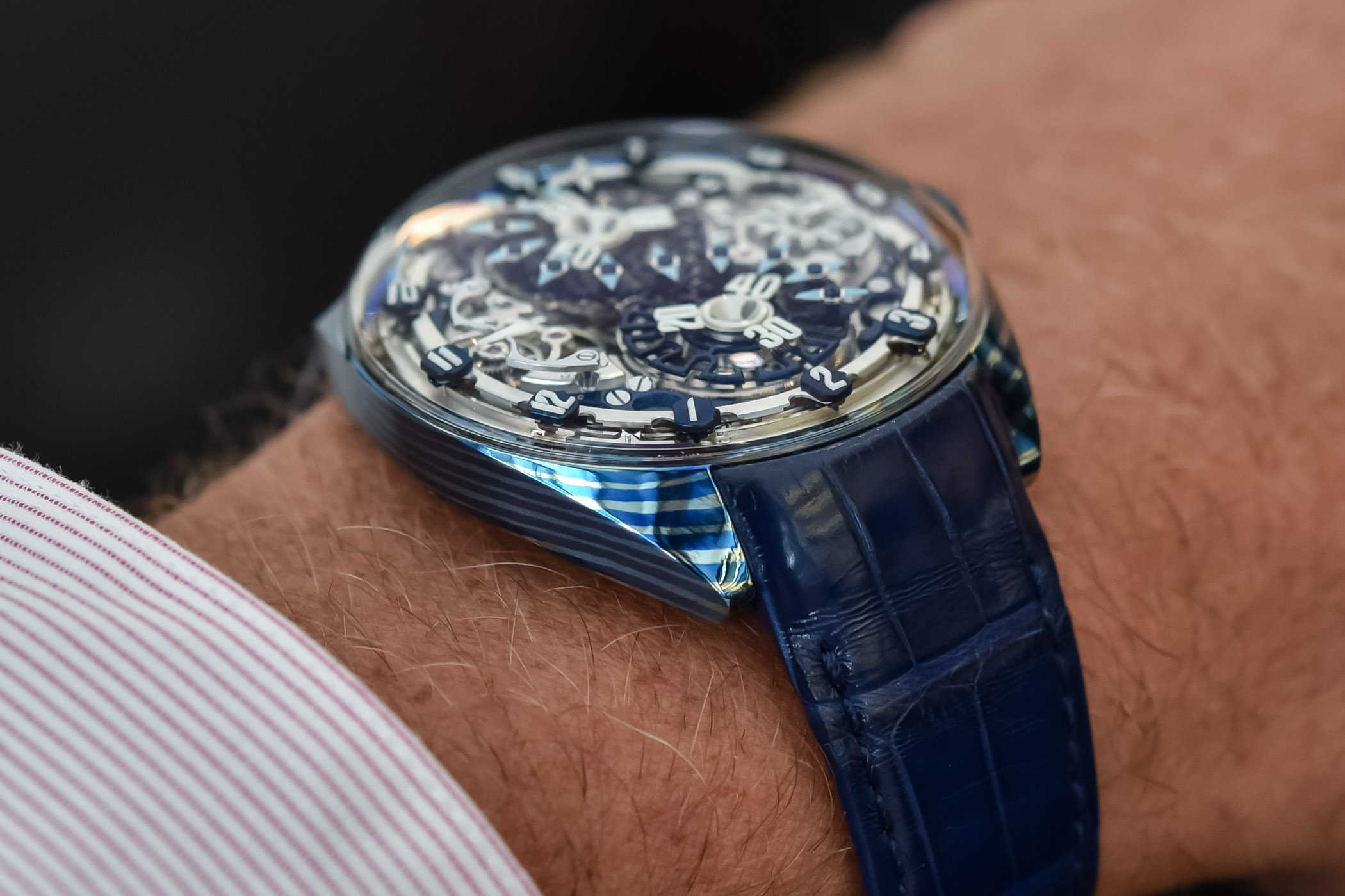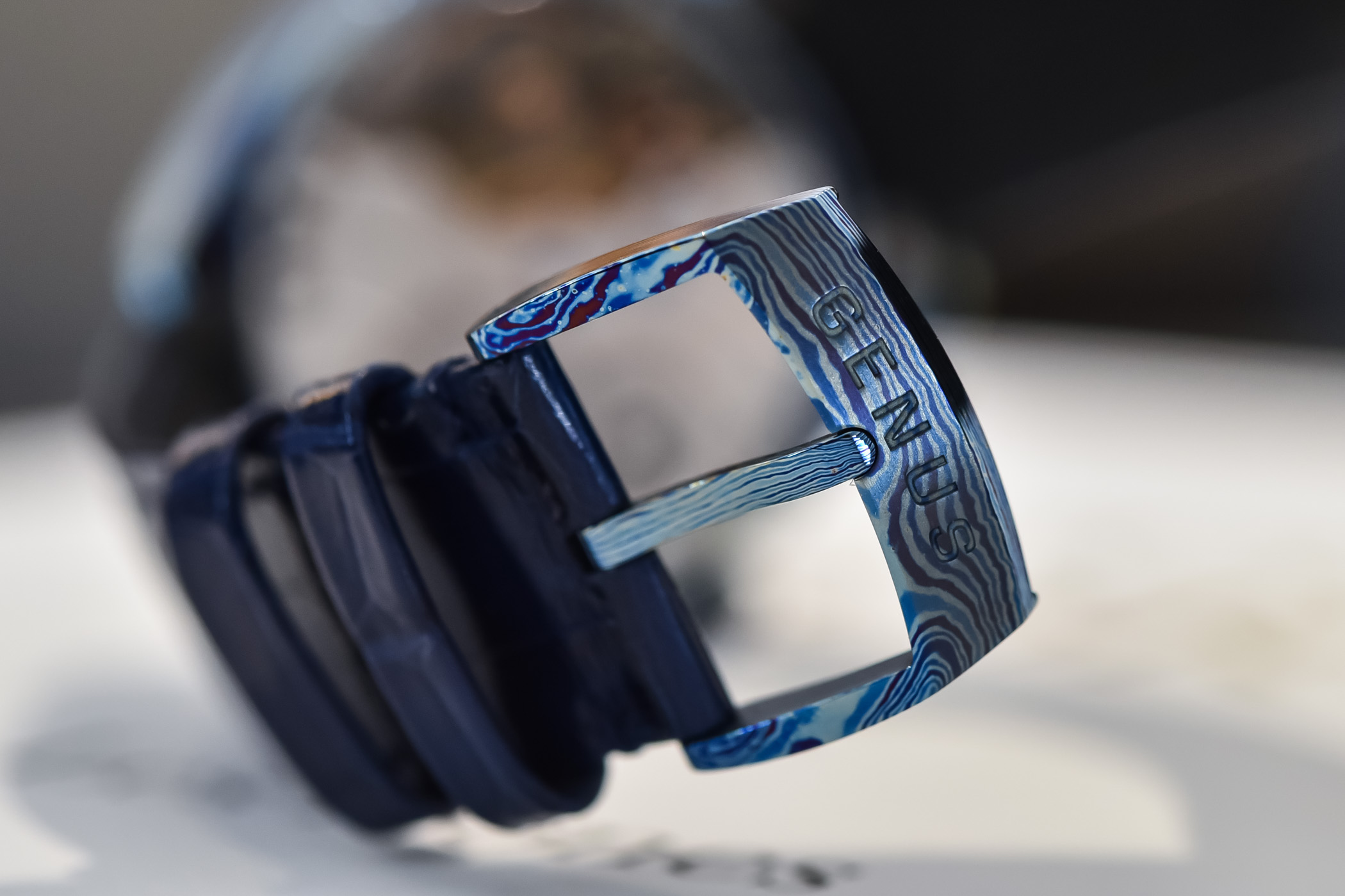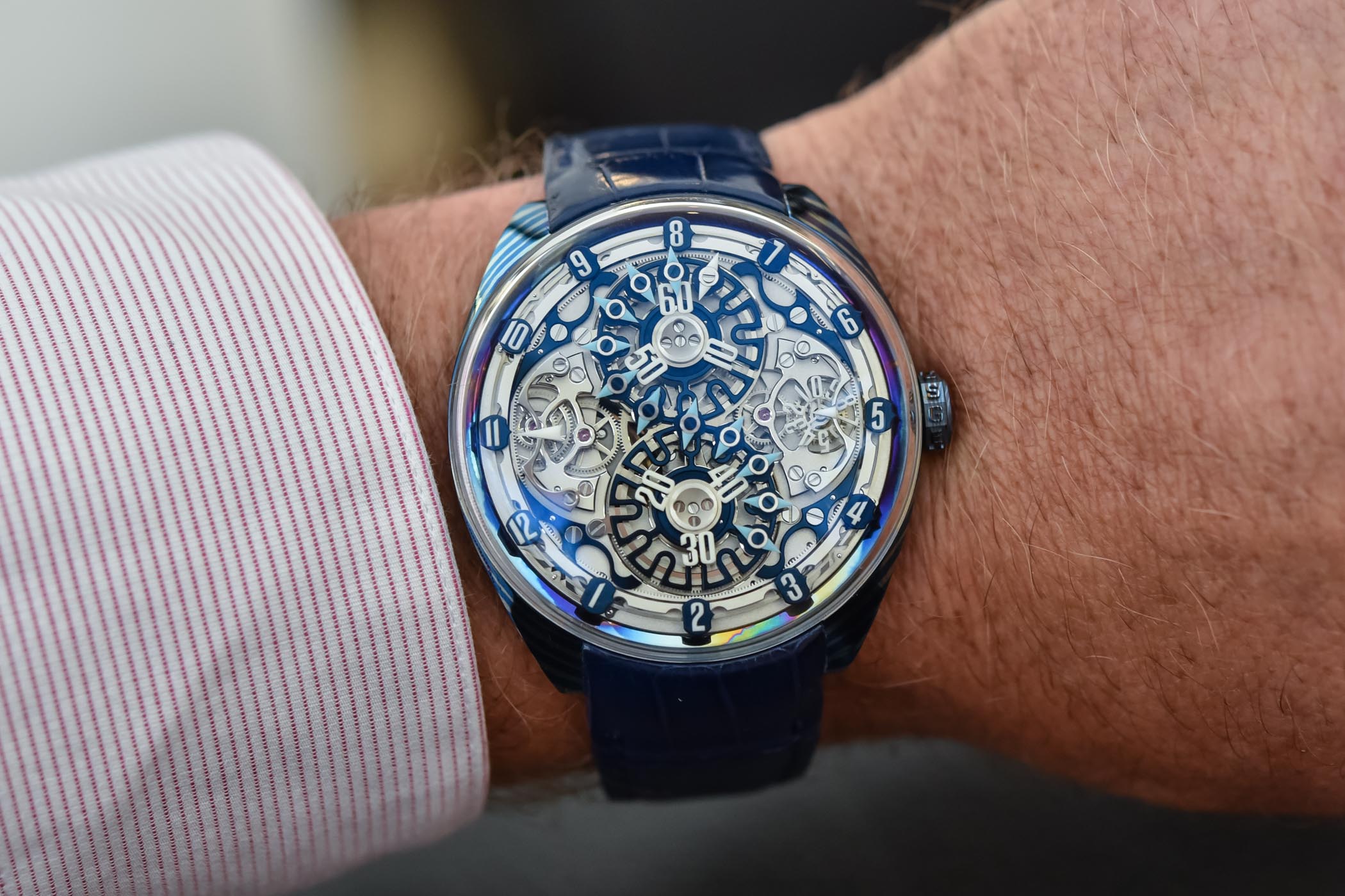The Genus GNS1.2 TD In Damascene Titanium
An unusual display encased in an unusual material.
Last year saw the introduction of Genus Watches, a new brand on the independent watchmaking scene with a novel way of displaying the time. While the vast majority of watches display the time in a classic way (with 2 or 3 hands rotating over a round dial), Genus came up with something radical in the form of a horological ‘centipede’ to indicate the hours and tens-of-minutes. This year, this unusual display is back in a new version of the watch, with an equally unusual and impressive material. Let’s take a look at the new Genus GNS1.2 TD In Damascene Titanium.
The display & movement
No hand, no dial, no circular motion of the time. Genus has created a display that is entirely novel and fairly complex – to say the least – and, of course, entirely mechanical. Starting with the hours, these are indicated by twelve satellites, one for each hour, rotating around the periphery of the watch. These indices orient themselves in the reading direction as they get closer to the fixed pointer at 9 o’clock.
The most spectacular and original part is probably the indication of the tens of the minutes. Some type of mechanical ‘centipede’ (the brand calls this free-circulating element ‘Genus’) crawls over and around two 30-minute circular indicators. Moving from one orbit to the other, it forms the figure eight, while its first link or ‘leading-element’ allows reading the time. Last, the precise minutes are displayed at 3 o’clock thanks to an index on a rotating disk. Naturally, it is a bit puzzling at first but this complex mechanical development is unorthodox, creative and captivating.
This display is truly unique on the watchmaking scene and required close to 10 years of research and three years of development – Sébastien Billières, co-founder and watchmaker, has over 20 years of experience in the industry, including Roger Dubuis and Urwerk where he has been involved in the Opus V project for Harry Winston. Let’s say that unusual time displays were already a thing for him. And this was rewarded by the recognition of his peers and winning the Mechanical Exception Prize at the GPHG 2019.
This ultra-complex, demonstrative display is powered by a proprietary movement. The calibre 160W-1.2 is an Haute Horlogerie hand-wound engine, designed exclusively for this watch, and that measures 38mm in diameter – so it fills the case almost entirely. With 418 components, its complexity is mostly seen on the dial side, however, the back is equally impressive regarding the decoration of the parts. The main plate and bridges are made of 18k gold. The escapement and oscillator are part of a block that can be removed from the movement which helps the watchmaker adjust the display mechanism. Ticking at 18,000vph, the large balance wheel features adjustment screws. The power reserve of the movement is 50 hours.
The new Damascene Titanium version
Previously available in an 18k white or rose gold case, this year Genus adds a new model that is made from a material as impressive as the display, with the GNS1.2 TD (for Titane Damassé). Here the case is made thanks a method named the Damascus smithing technique or Mokume-gane in Japan – used to forge katana sword blades since the early 17th century. And here, to add to the complexity to this craftsmanship, it is made from titanium.
Damascening consists of forging sheets of metal layer by layer. After having been hammered, each sheet is folded back upon itself, and the operation is repeated as many times as necessary. This homogeneous ‘stacking’ of homogeneous layers, each one annealed between each fold, gives the material a very particular aspect. Each incision, each bevel into the edge of the damascened metal reveals the strata, the shapes, the undulations of the material.
Usually executed in stainless steel, here Genus applies this technique to titanium. If this metal is 40% lighter, titanium is also three times harder and can be forged at temperatures 300 degrees higher than conventional watchmaking steel. Genus also works with layers of various titanium alloys, each of which exhibits a different tint and reaction to heat. And because of the nature of this material, each Genus GNS1.2 TD will have a unique pattern.
Finally, the case is heated to reveal the desired colour – depending on the temperature, the colour will be different and to the client’s choice. In fact, the future owner will be invited to attend the ‘Damascene revelation’ by open flame at the workshop in Geneva and will be able to intervene directly in the colouring as well as decide on a particular surface finish: matte, satin or polished. The process is visible in the video on top of this article.
Pricing
The Genus GNS1.2 TD Damascene Titanium is a very exclusive watch only produced on request. It will be priced at CHF 145,000. More details at www.genuswatches.swiss.


